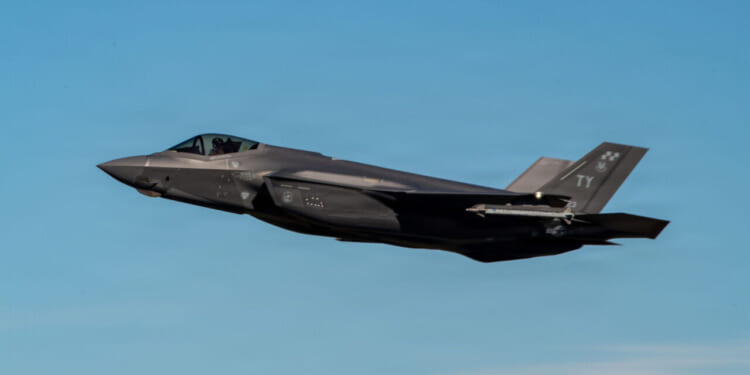This procurement deal could impact Israel’s aerial edge over its Gulf neighbor.
The Trump administration is mulling over Riyadh’s request to procure as many as four dozen F-35 Lightning II fighter jets. According to US news outlets, the Saudi request has already cleared a major Pentagon obstacle required for the purchase’s overall approval. This preliminary nod could symbolize a huge policy shift. Historically, the United States has maintained the qualitative military edge strategy pertaining to Israel when it comes to its military-related sales in the region. Essentially, the United States has ensured the Jewish state retains a superior defense advantage over its adversaries in the Middle East. If Riyadh is granted the green light to procure F-35s, this multi-billion-dollar deal would certainly elevate its aerial capabilities to that of Israel.
What Makes the Lightning II So Great?
The Lockheed Martin-designed F-35 fighter series is arguably the most dominant fifth-generation jet to ever fly the skies. When it comes to stealth, avionics, and versatility, the American-made platform is unparalleled. The Joint Strike Fighter was initially conceptualized to fulfill a DARPA program requirement to develop a short take-off and vertical landing capable strike fighter. Ultimately, three iterations of the Lightning II were designed to fulfill the unique needs of the Air Force, Marine Corps, and Navy, resulting in the “Alpha,” “Beta,” and “Charlie” variants, respectively. The F-35’s funding today is largely covered by the United States, in addition to its co-development partners. NATO allies and US allies—including the UK, Canada, Denmark, Italy, Australia, Norway, and the Netherlands—make up the nine-nation co-development group.
Designed to achieve air dominance in the skies, the Lightning II may be the most survivable fighter of its kind in service today. The platform notably serves as a “quarterback of the skies,” as Lockheed likes to say, integrating all forms of operations to dominate the skies. In addition to its impressively small radar cross-section and radar absorbent coatings, the F-35 features top-tier sensors and avionics. Some of the platform’s electronic sensor capabilities include the Electro-Optical Distributed Aperture System, which extends the jet’s range detection and precision targeting. The fifth-generation platform also is equipped with the AN/APG-81 AESA radar, which is widely considered to be the most sophisticated radar system available.
The Lightning II is powered by the Pratt & Whitney F135 engine, giving the jet a top speed of Mach 1.6 (times the speed of sound). Perhaps most significant, however, is the F-35’s ability to gather, process, and securely transfer information in real-time to allied forces. The Multifunction Advanced Datalink (MADL) and Link-16 networks allow the fighter to connect the battlespace through integration.
Considering these specs and the Lightning II’s reputation generally, Riyadh’s interest in the platform makes sense. However, this procurement deal would impact Israel’s aerial edge over its Gulf neighbor substantially. Israel currently fields somewhere around 40-50 F-35I “Adir” fighters and is expected to receive a total of 75 of these jets over the next decade.
About the Author: Maya Carlin
Maya Carlin, National Security Writer with The National Interest, is an analyst with the Center for Security Policy and a former Anna Sobol Levy Fellow at IDC Herzliya in Israel. She has by-lines in many publications, including The National Interest, Jerusalem Post, and Times of Israel. You can follow her on Twitter: @MayaCarlin. Carlin has over 1,000 articles published over the last several years on various defense issues.
Image: DVIDS.
















